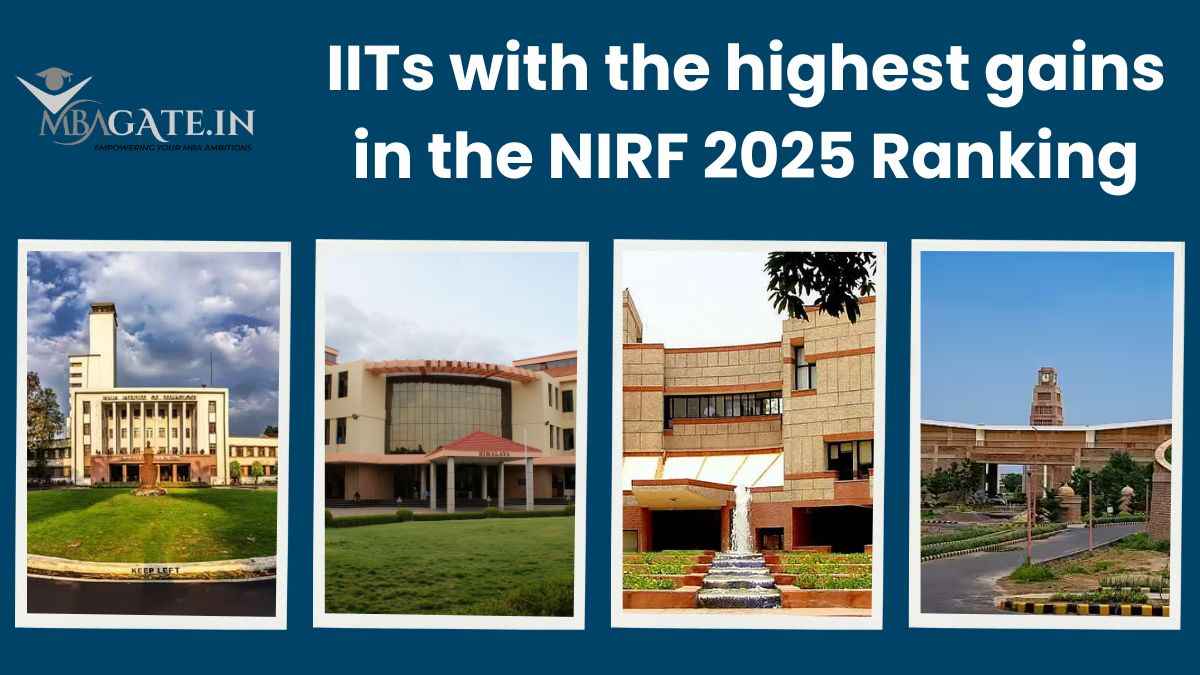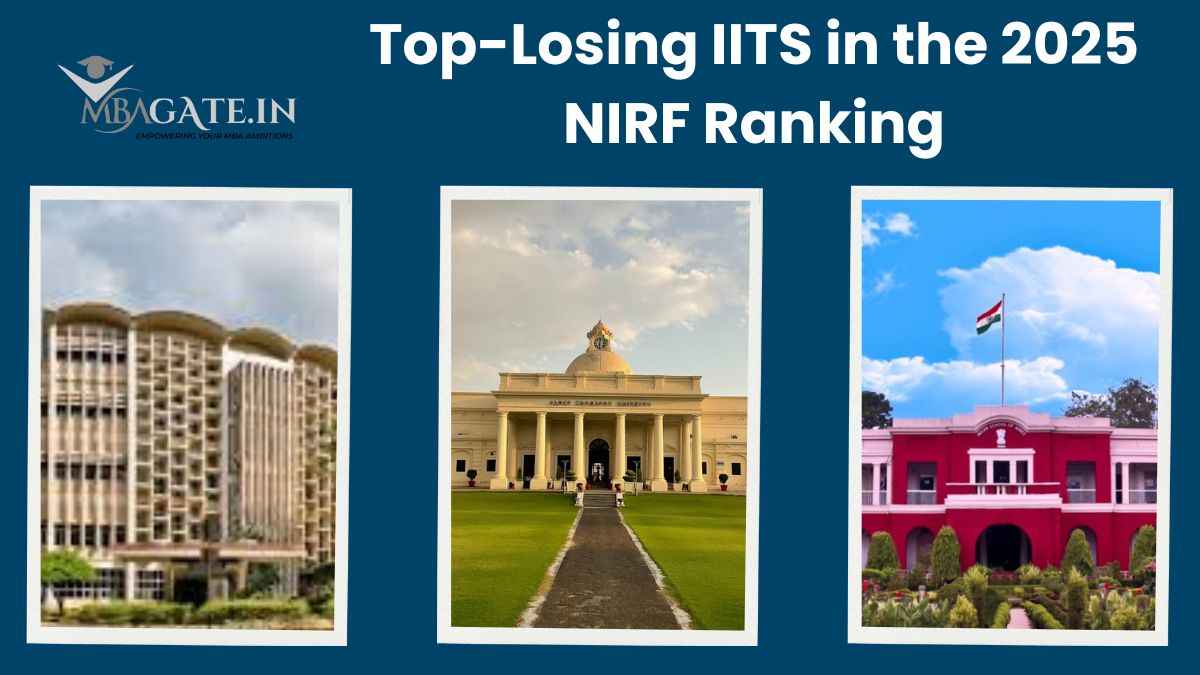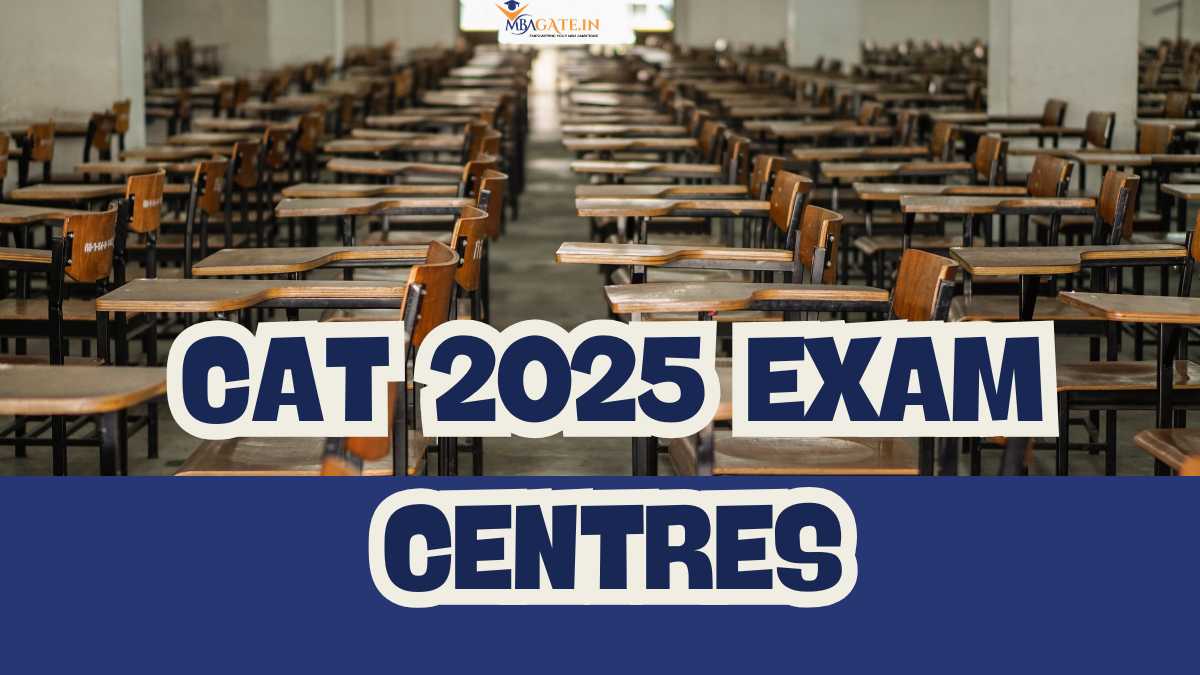NIRF Ranking 2025: Top Gaining and Losing IITs in the Management Category
Table of Content
-
- + more items Show less

The Government of India through the Ministry of Education initiated the NIRF to rank higher educational institutions on a range of parameters such as teaching, learning resources, research, graduation rates, outreach, inclusion and peer perception. These rankings provide a valid and transparent evaluation of institutions across the nation.
The National Institutional Ranking Framework 2025 has ranked many Indian Institutes of Technology in the management category reflecting their growing significance in management studies. IIT Delhi notably took the fourth position in the management category reflecting its significant improvement in this field.
Top MBA institutes India, when compared with past years, IITs have shown a general uptrend in the management rankings which points towards their increased emphasis on quality education, research and industrial interface. This is a reflection of a conscious effort towards building all round management programs to cater to the changing demands of business times.
Institutions such as IIT Delhi have demonstrated resilience and grit holding on to being one of the country's top institutions. This result indicates the success of their pedagogy and the growing stature of IITs as management education centres of excellence. The NIRF ranking changes 2025 indicate how the IITs are dedicated to excellence and play a decisive role in determining the direction of management learning in India.
IITs with the highest gains in the NIRF 2025 Ranking
Several IITs have made significant advances in the NIRF 2025 Management rankings over the previous year. IIT Kharagpur jumped from 19th place in 2024 to 12th place in 2025 an improvement of 7 rankings. Similarly IIT Madras rose from 16th to13th place a three rank improvement. IIT Kanpur also made gains moving from 29th to 27th place a two rank improvement. Notably, IIT Jodhpur debuted in the rankings at position 98. The IITs' increasing focus on and investment in management education, as they enhance academic programmes and business interactions to better prepare students for future challenges, is demonstrated by their performance in the management ranking.

Reasons for Improvement in the ranking
Curriculum Modernisation: IITs have updated their curriculum to adopt practical learning practices like live projects, case studies and simulations in response to changing business expectations. New domains of courses like artificial intelligence, digital transformation and sustainability are incorporated to make the students skill set suitable for industry requirements.
Infrastructure Expansion: Modern infrastructure such as smart classrooms, hi tech laboratories and virtual classrooms has greatly improved learning. Students who are exposed to latest technologies and collaborative workspaces can explore, innovate and engage more intensively in their course work.
Attention to Industry Connect: Industry connections have resulted in internships, workshops and mentorship for students in the form of robust alumni networks. These programs enable students to experience experiential learning, develop leadership skills and expand professional networks thus enhancing their employability and career prospects.
Top-Losing IITS in the 2025 NIRF Ranking
Some IITs dropped from the previous year's NIRF 2025 management rankings. IIT Dhanbad dropped from 46th to 48th place, IIT Roorkee went from 18th to 22nd and IIT Bombay fell from 10th to 14th place. These modifications are a result of increased competition as well as the changing difficulties in maintaining research exposure, industry involvement and academic excellence.

Causes of the IIT Management Rankings' Decline
Regardless of attempts to upgrade some IITs can expect to experience a decline in rankings due to a number of reasons:
Enhanced competition: With more institutions expanding and enhancing their management programs, competition has grown fiercer. New entrants private universities and established business schools are enhancing their curriculum, infrastructure and industry connections which is proving challenging for some IITs to maintain or enhance their position.
Reduced visibility of research: A decline in research output, decreased publications, or limited business connections can all influence the credibility of an institute. If research is not highly noticed referenced or applied the institution will likely be seen as less innovative or impactful than competitors.
Change in Perception: Reputation plays a major role in rankings. Placement rates, alumni involvement and student satisfaction all can serve to negatively affect how students, recruiters and the academic community view a school. Reputational changes can happen even amidst strong other areas.
Faculty Shortage or Turnover: The attrition of seasoned faculty, slow hiring processes and lower investment in development can all affect teaching quality and student outcomes. Without ongoing mentoring and support academic quality can decline impacting rankings.
Delays in Curriculum Changes: These institutions failing to stay abreast with market trends or technological advancements would lag behind. A curriculum lacking an emphasis on evolving abilities or practicality could lead to lower employability and bad graduate outcomes.
Impact of Ranking Changes
On Students: More highly ranked IITs draw more aspirants, provide more job opportunities and acquaint students with cutting edge research and industry trends. Lower ranked schools on the other hand can suffer a decline in student interest or lose their best talent.
On Recruiters: Recruiters employ rankings as a measuring rod for talent selection. Highly ranked institutions are regarded as sources of quality graduates while those that are lagging need to spend more on proving their skills and student abilities.
On Academic Collaborations: Better rankings enhance the reputation of an institute, leading to additional partnerships with international universities, research funding and industrial collaborations. A loss of rank can prevent these opportunities making it harder to maintain cross disciplinary interactions and innovation.
FAQs
NIRF rankings give critical details regarding the top institutes according to academic excellence, industry connections, research and placement opportunities giving students the option of making more informed decisions.
IIT Kharagpur, IIT Madras and IIT Kanpur all had a noticeable improvement while IIT Jodhpur joined the rankings for the first time at 98th position.
Enhancing research output, revising curriculum with practical learning techniques, developing infrastructure and fortifying industry relations all contributed significantly.
IIT Bombay, IIT Roorkee and IIT Dhanbad lost their ranks due to various issues.
Many of the reasons for reduction involve more competition, less visibility of research, change in perception, absence of faculty, and slow pace of curriculum modernisation.
Rank-stronger IITs receive more applicants and provide greater career opportunities, while lower-ranked ones face dwindling interest and talent retention.
Recruiters use rankings to scan talent pools and greater rankings lead to more research collaborations, funding prospects and alliances with overseas universities.









